Imagine stepping into your garden, where a charming stone pathway guides you through a tapestry of vibrant blooms and lush greenery. Whether you’re a seasoned gardener or just beginning to explore the joys of cultivating your own outdoor space, building a stone pathway can transform your garden into a picturesque retreat while adding functionality and structure. Creating a pathway is not just about aesthetics; it’s about crafting an experience that invites you to wander, explore, and connect with nature in your own backyard.
For those eager to embark on this satisfying project, rest assured that constructing a stone pathway is more attainable than it might seem. In this article, we’ll walk you through the essential steps, from selecting the right stones and materials to designing a layout that complements your garden’s unique charm. You’ll discover tips and techniques that cater to all levels of expertise, ensuring that your pathway is both beautiful and durable. By the end, you’ll have the knowledge and confidence to create a pathway that not only enhances your garden’s beauty but also stands the test of time.
Choosing the Perfect Stone Type
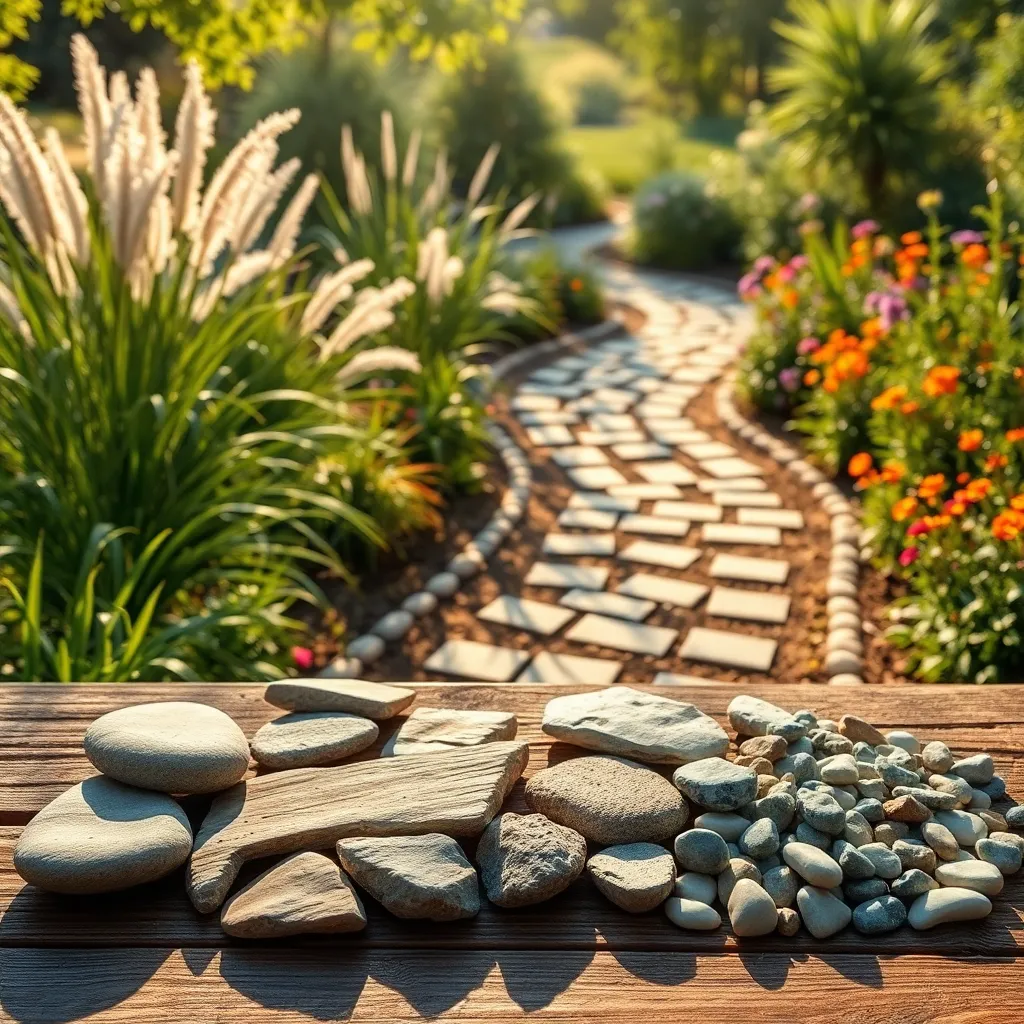
Choosing the right stone type for your garden pathway is crucial for both aesthetics and functionality. Consider factors like durability, color, and texture to ensure your path complements the garden environment.
Naturally occurring stones like granite and sandstone offer a rustic charm and are highly durable, making them ideal for pathways with heavy foot traffic. Granite’s density helps it withstand harsh weather conditions, whereas sandstone provides a softer, more natural look.
For a more polished finish, consider using slate or limestone. Slate’s smooth surface is perfect for creating a modern, elegant pathway, while limestone offers a light, warm appearance that brightens garden spaces.
When selecting stones, keep in mind the maintenance requirements of each type. While stones like granite are low maintenance, softer stones such as limestone may require sealing to prevent staining and erosion.
Designing Your Ideal Path Layout
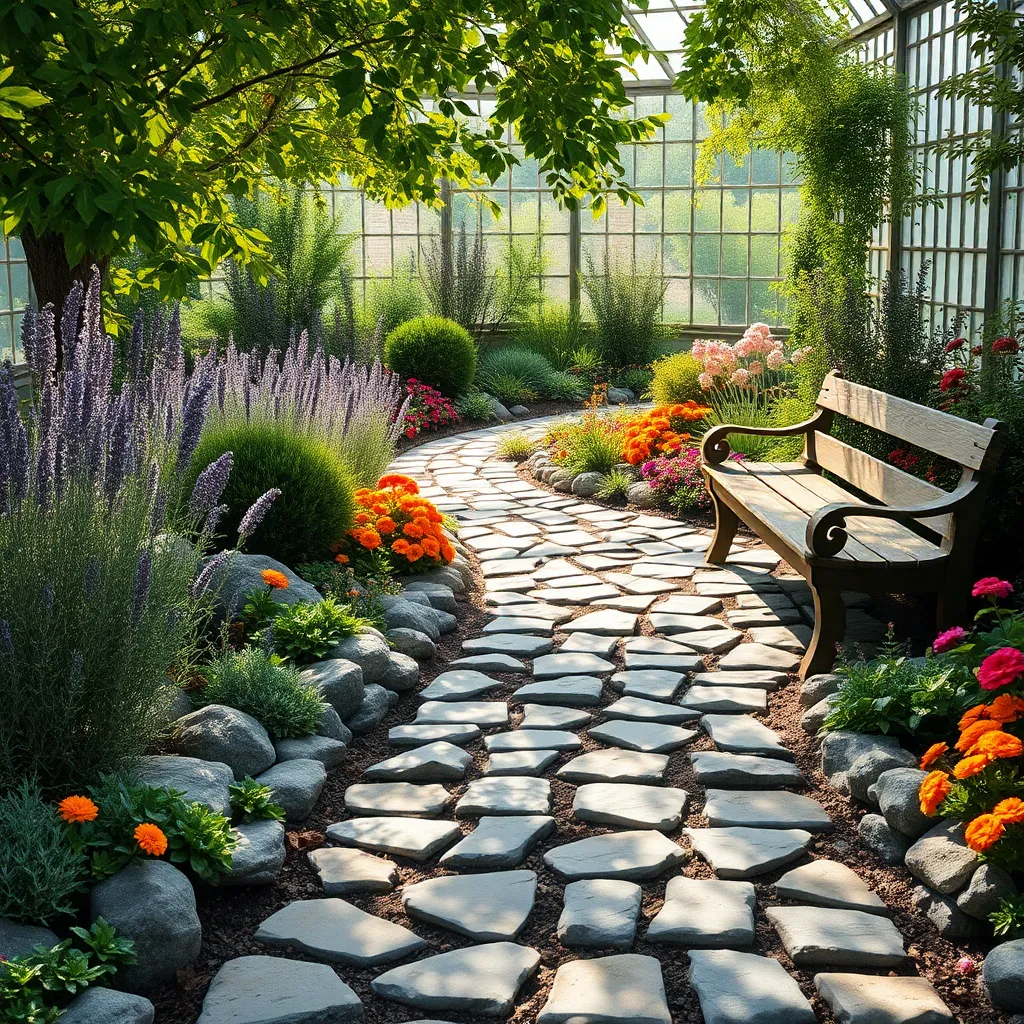
When designing your ideal path layout, consider both aesthetics and functionality to create a space that enhances your garden’s beauty and accessibility. Think about the path’s intended use; if it’s a main walkway, ensure it’s wide enough for easy passage, typically around 3 feet.
Incorporate gentle curves instead of straight lines to give a more natural feel to your garden path. Curved paths can create a sense of mystery and discovery, encouraging visitors to explore your garden further.
For a practical touch, use a garden hose or rope to outline potential path designs before committing to a final layout. This allows you to visualize different options and make adjustments easily without the need for heavy lifting.
Consider the surrounding plants and how they will interact with your path over time. Allow for future growth by leaving space between the path and any plantings, and choose low-growing or non-invasive species to border the path.
For beginners, start with a simple layout and gradually add complexity as you gain confidence in your gardening skills. Experiment with different materials and patterns to see what works best in your space, keeping in mind maintenance and durability.
- Use gravel or wood chips for easy adjustments and a softer look.
- Ensure the path is level and stable to prevent tripping hazards.
- Consider adding solar lights along the edges for safe navigation at night.
Preparing the Ground for Stones
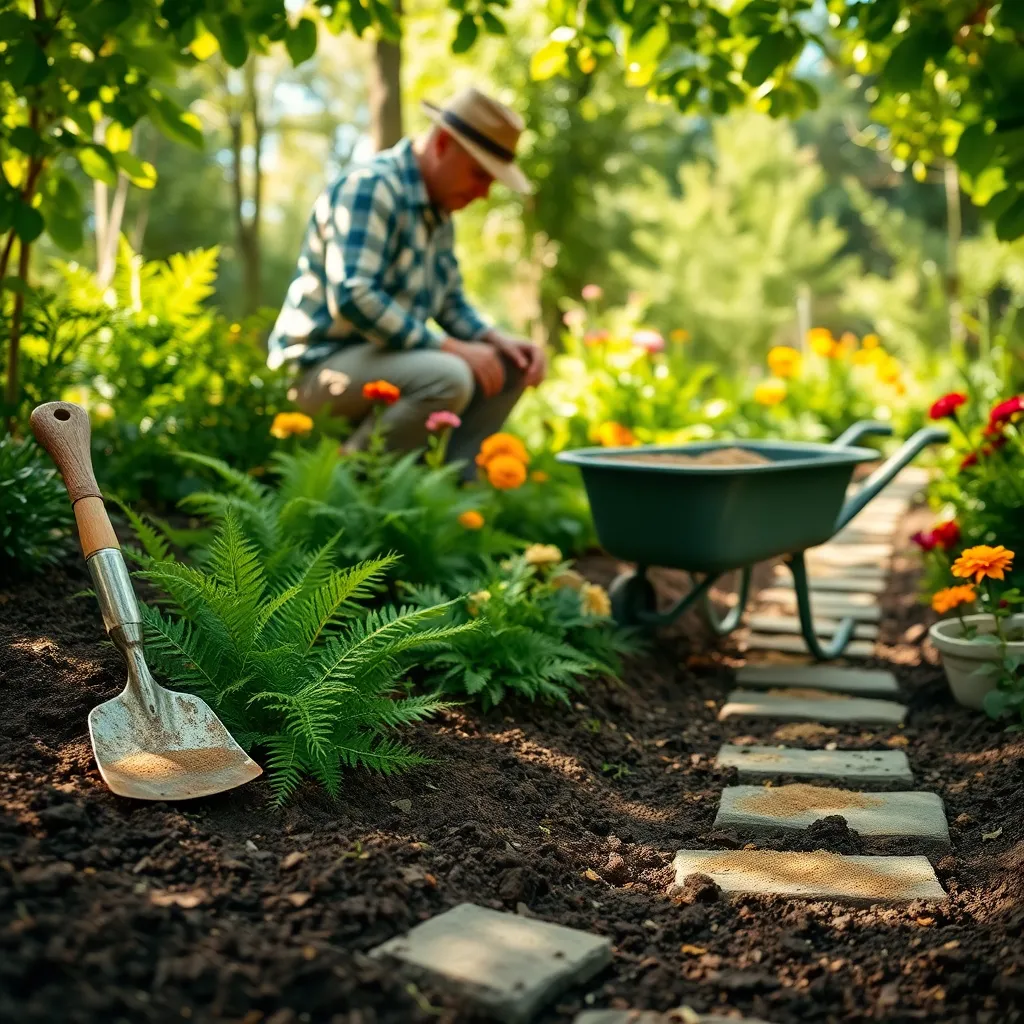
Before laying stones for your garden pathway, it is crucial to prepare the ground properly to ensure durability and a level surface. Start by marking the path using stakes and string, ensuring the layout matches your design plans from the previous section.
Once the pathway has been outlined, remove any existing grass, weeds, or debris from the area to create a clean slate. This step is essential as it prevents unwanted growth from pushing through your finished pathway, maintaining its neat appearance over time.
Next, dig down to a depth of about 4-6 inches, which will accommodate the stones and any necessary base materials. For gardeners in areas with heavy rainfall, consider digging a bit deeper to improve drainage and prevent water from pooling on your pathway.
After excavating, compact the soil with a tamper to create a firm foundation. Compacting the soil prevents future shifting and settling, which could destabilize your stones and lead to uneven surfaces.
For added stability, spread a 2-3 inch layer of crushed stone or gravel over the compacted soil, and then compact it again. This base layer allows for excellent drainage and provides a solid foundation for the stones, ensuring your pathway remains beautiful and functional for years.
Laying Stones with Precision
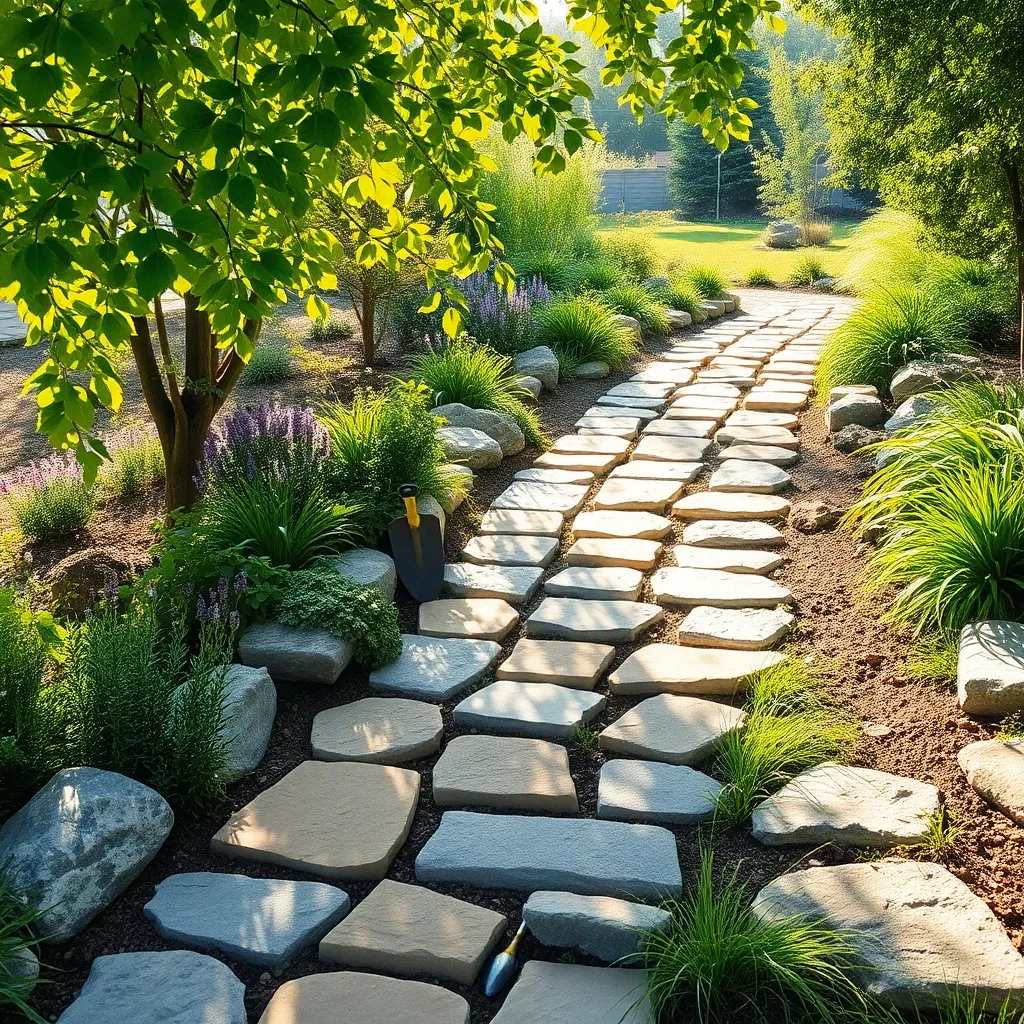
When laying stones with precision, start by choosing stones that are uniform in thickness and size to ensure a stable pathway. Measure the area meticulously where the stones will be placed to avoid any gaps or uneven surfaces.
To maintain precision, use a string line or a chalk line to outline the path, ensuring straight edges and a cohesive look. Place stones carefully along this line, adjusting as necessary to keep the path even and aligned.
After positioning the stones, use a level to check each stone individually for flatness and consistency. If a stone is uneven, adjust the soil or sand beneath it to achieve a perfectly level surface.
Incorporate a jointing material such as fine gravel or sand between the stones to stabilize them and prevent shifting over time. Water the path lightly to help settle the stones and jointing material together, ensuring longevity and durability of your garden pathway.
Maintaining Your Stone Pathway
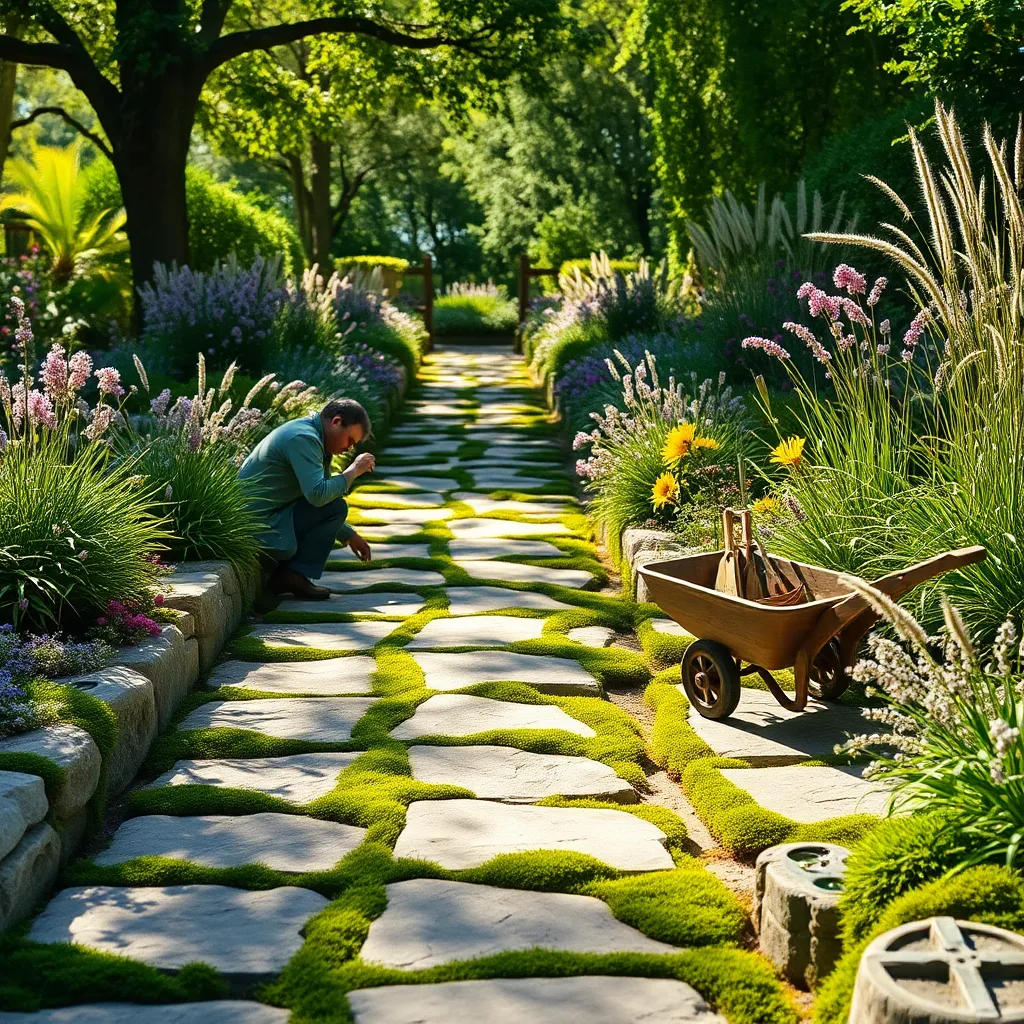
Maintaining your stone pathway ensures it remains a charming feature of your garden for years to come. Regular upkeep not only preserves its appearance but also enhances its safety and functionality.
Begin by sweeping the pathway to remove dirt, leaves, and debris, using a stiff-bristled broom for best results. Frequent sweeping prevents buildup that can lead to stains or moss growth.
For more thorough cleaning, use a garden hose to wash away any stubborn grime. In cases where the stones have become slippery, a mixture of water and mild detergent applied with a soft brush can effectively restore their traction.
Inspect your pathway regularly for any loose or sunken stones, which can pose a tripping hazard. Re-leveling these stones is essential and can be done by lifting and adding sand or gravel beneath them to stabilize the surface.
To prevent weed growth between the stones, consider applying a pre-emergent herbicide annually in early spring. Alternatively, a mixture of vinegar and water can be sprayed as a natural weed deterrent, providing an eco-friendly solution.
For those living in regions with harsh winters, it’s crucial to avoid using salt-based de-icers, which can damage the stone surfaces. Opt instead for sand or cat litter to provide traction without risking the integrity of your pathway.
Conclusion: Growing Success with These Plants
In “Building A Garden Pathway With Stones,” we explored five transformative concepts to nurture your relationship: the importance of clear communication, the power of patience, the necessity of mutual support, the value of shared goals, and the joy of celebrating milestones together. Each of these elements serves as a stone, carefully placed to create a pathway that leads to deeper connection and enduring love.
As an actionable step, take a moment today to engage in an open conversation with your partner about a shared dream or goal. This small act can strengthen the foundation of your relationship, paving the way for future harmony.
Remember, the journey to relationship success is ongoing. Save or bookmark this article now to revisit these pivotal concepts whenever you need guidance or a gentle reminder of the path you’re forging together.
Looking ahead, envision your relationship flourishing as you continue to nurture it with intention and care. Every step you take today plants seeds for a more fulfilling tomorrow. Empower yourself to take action, and watch as your relationship blossoms into a beautiful, enduring partnership.

